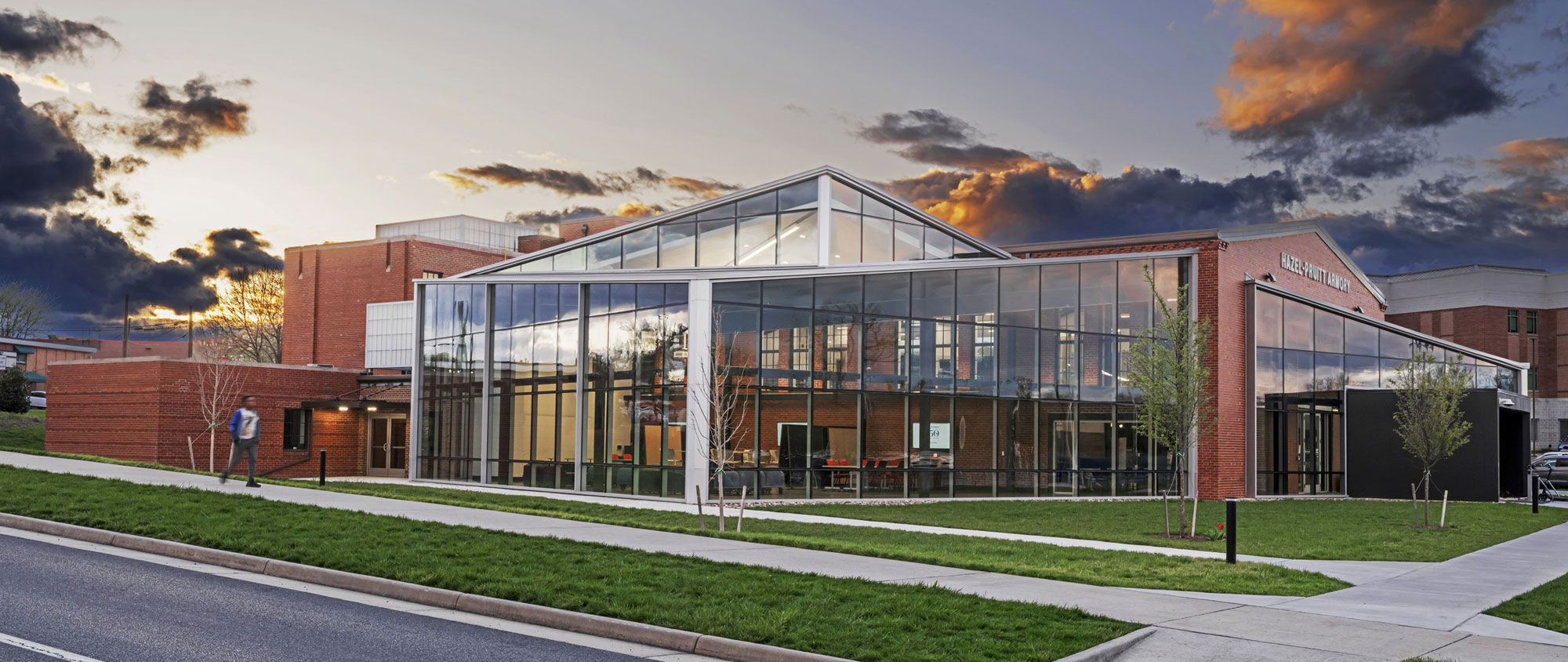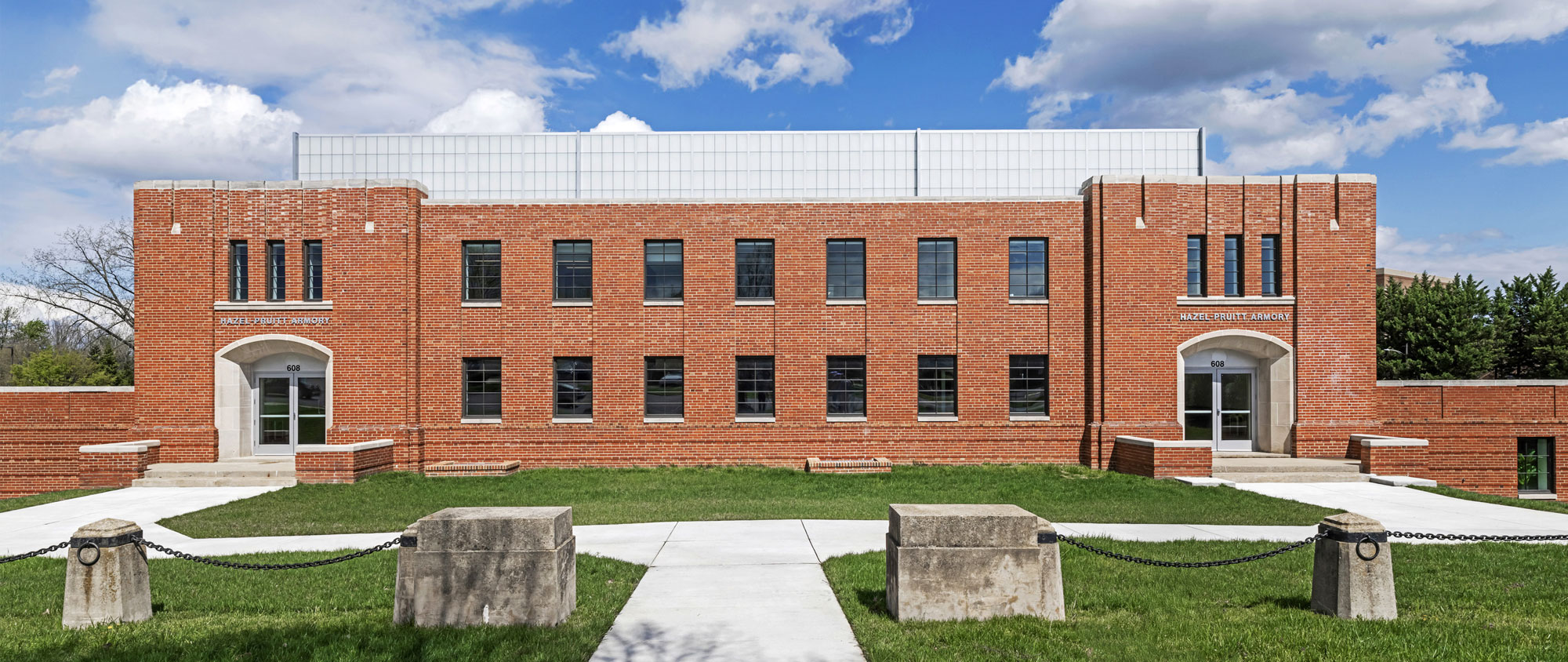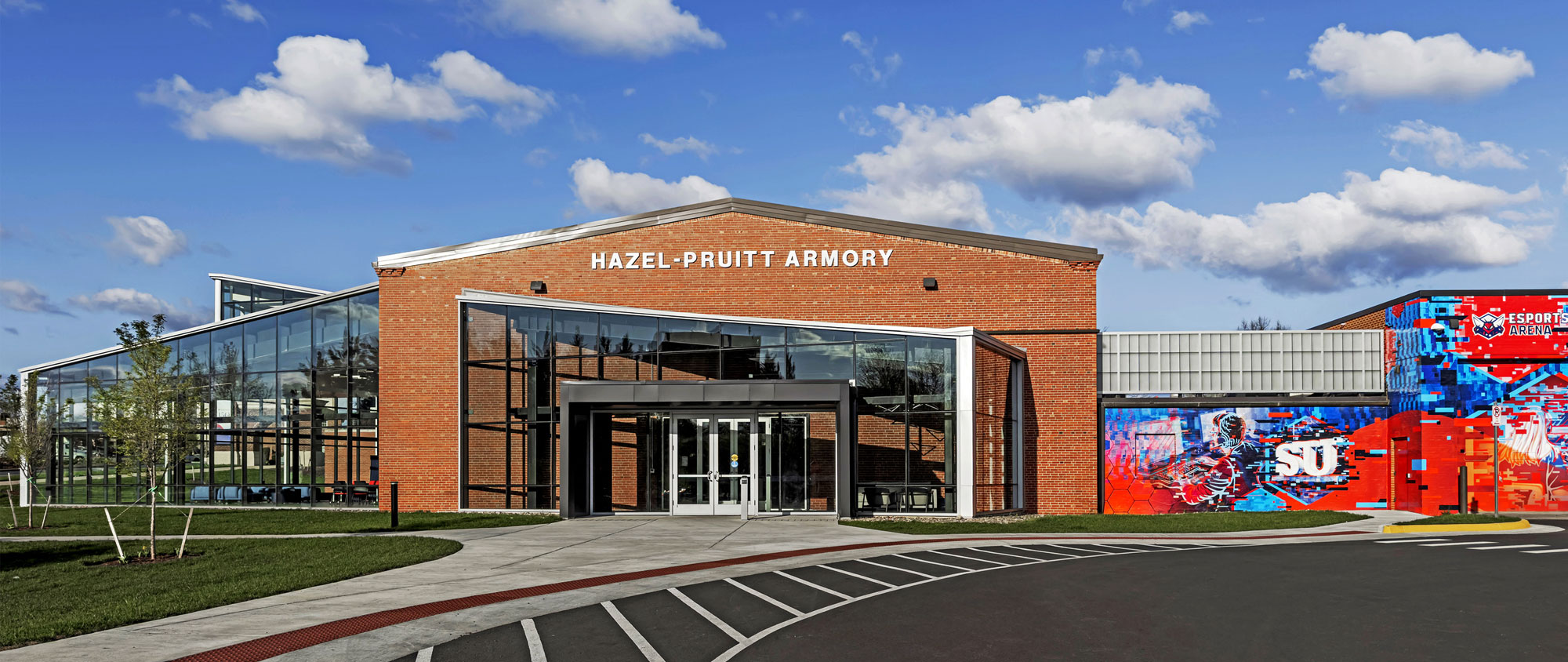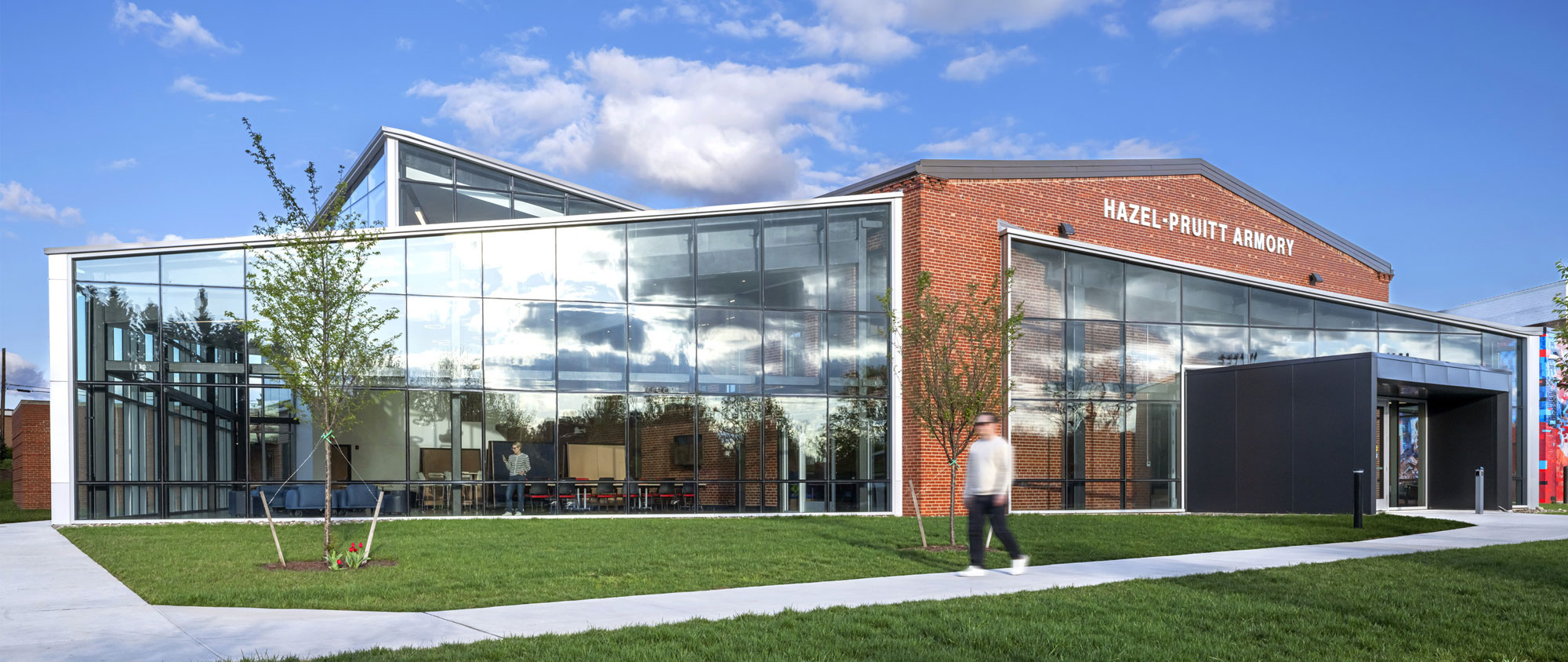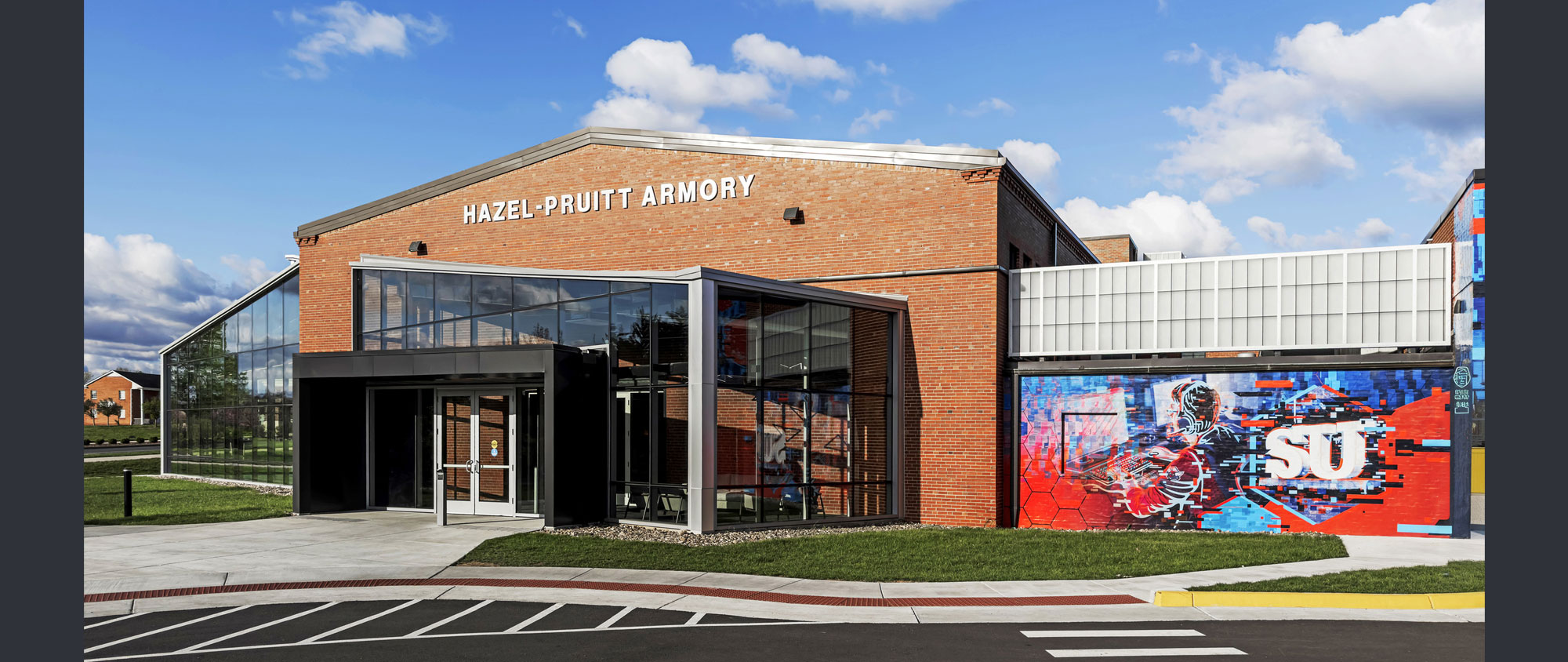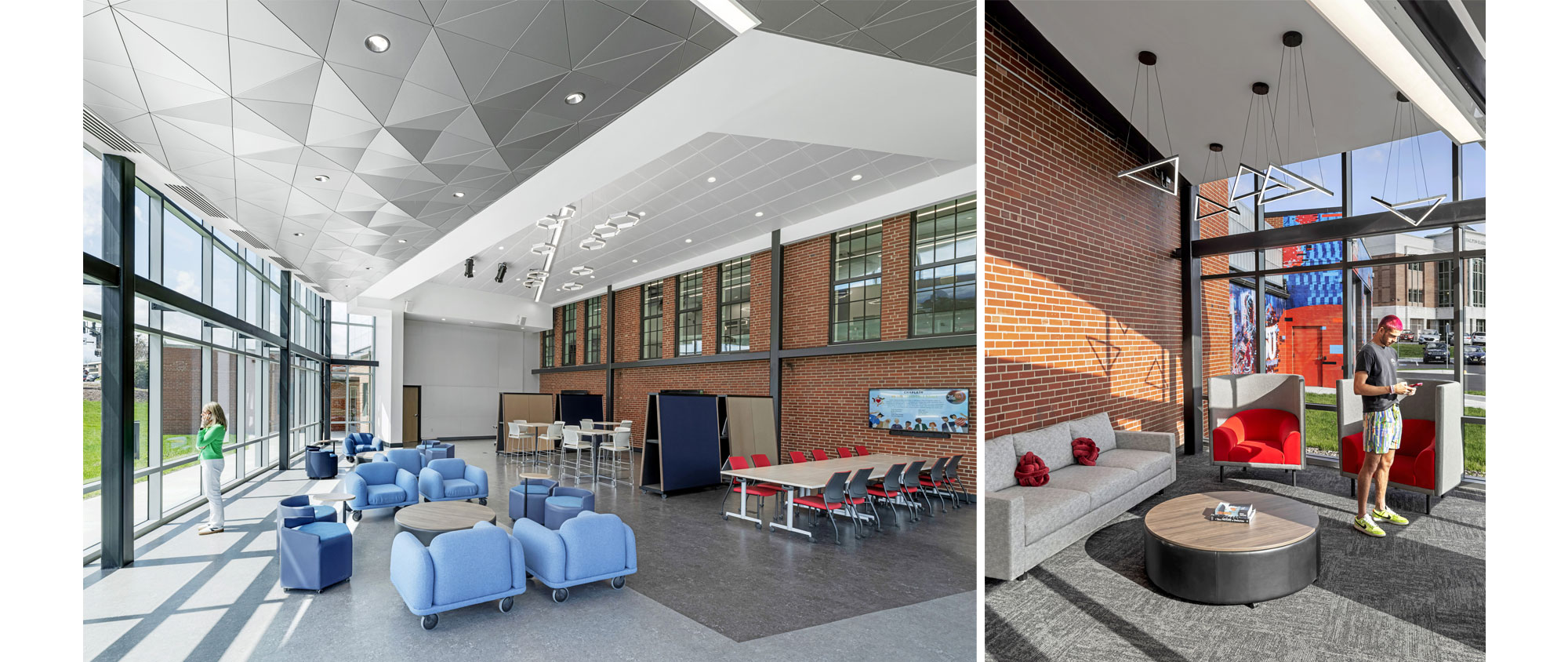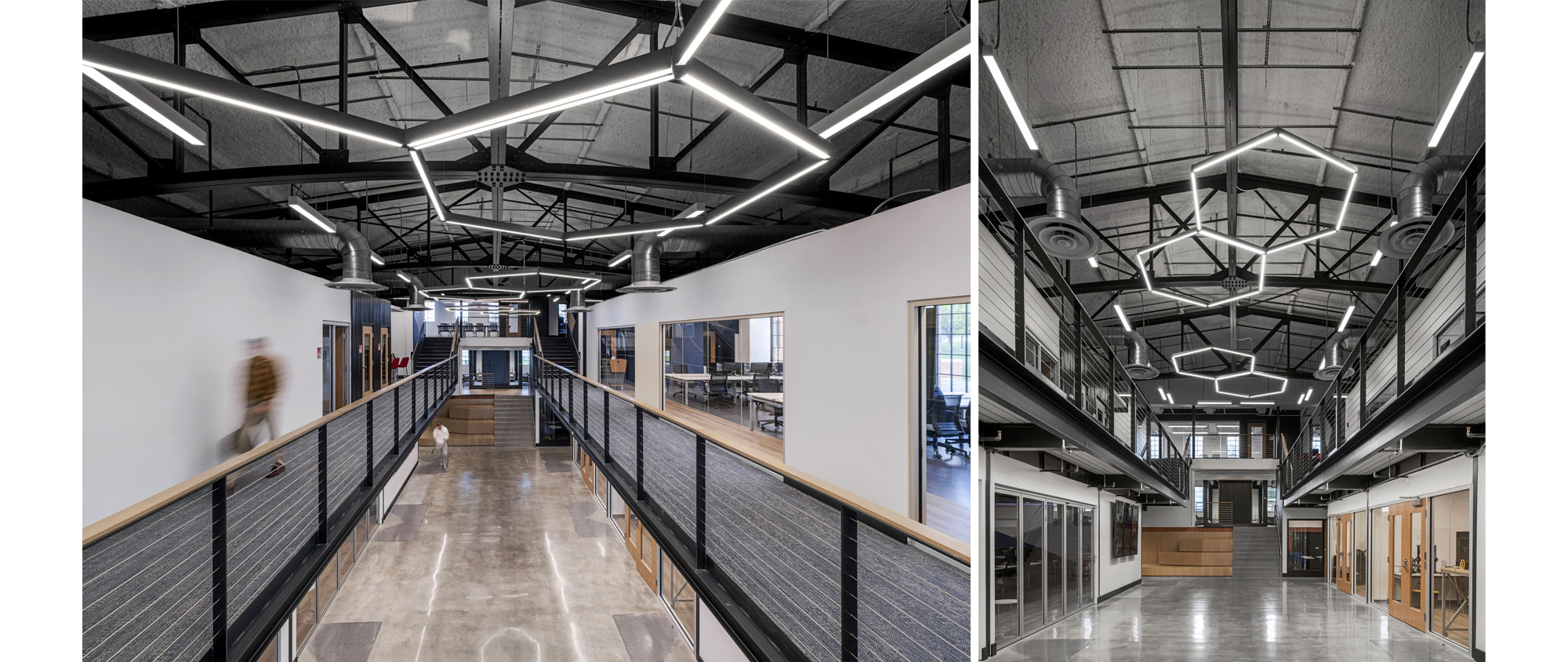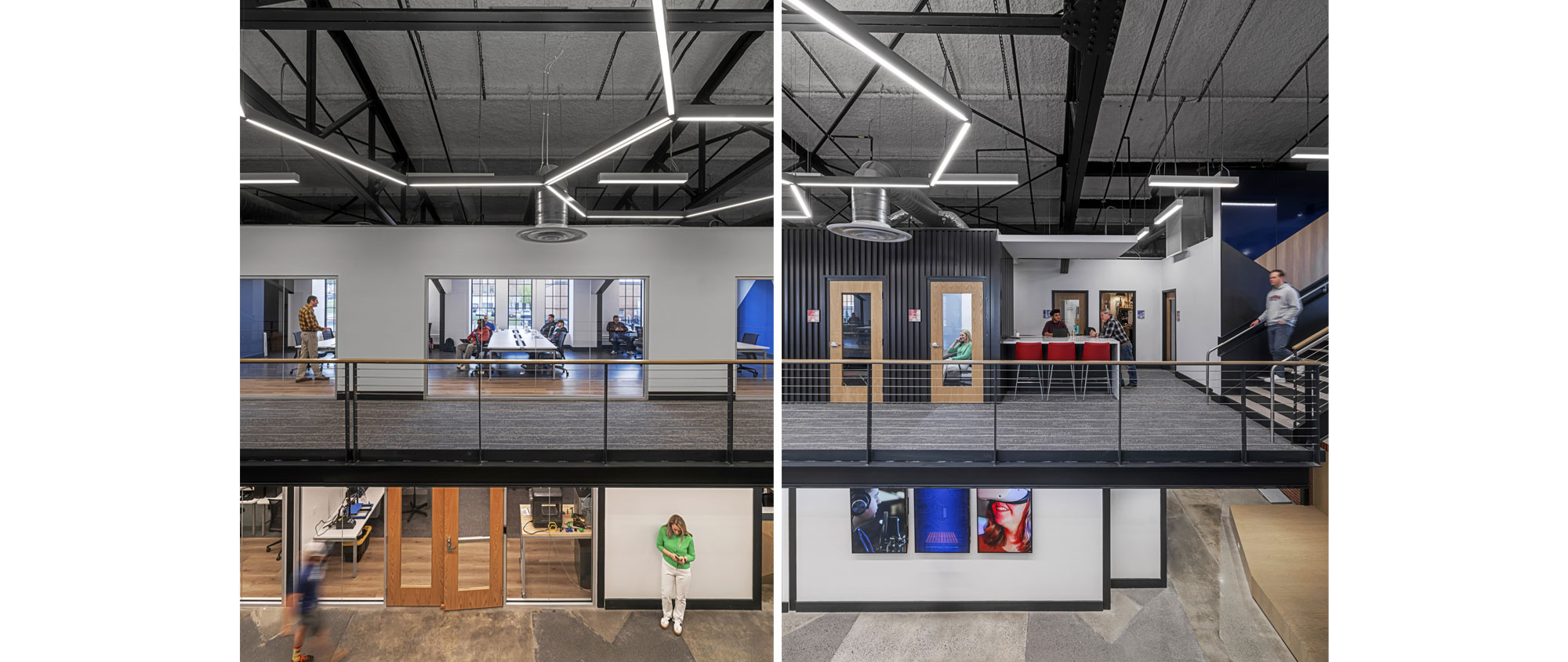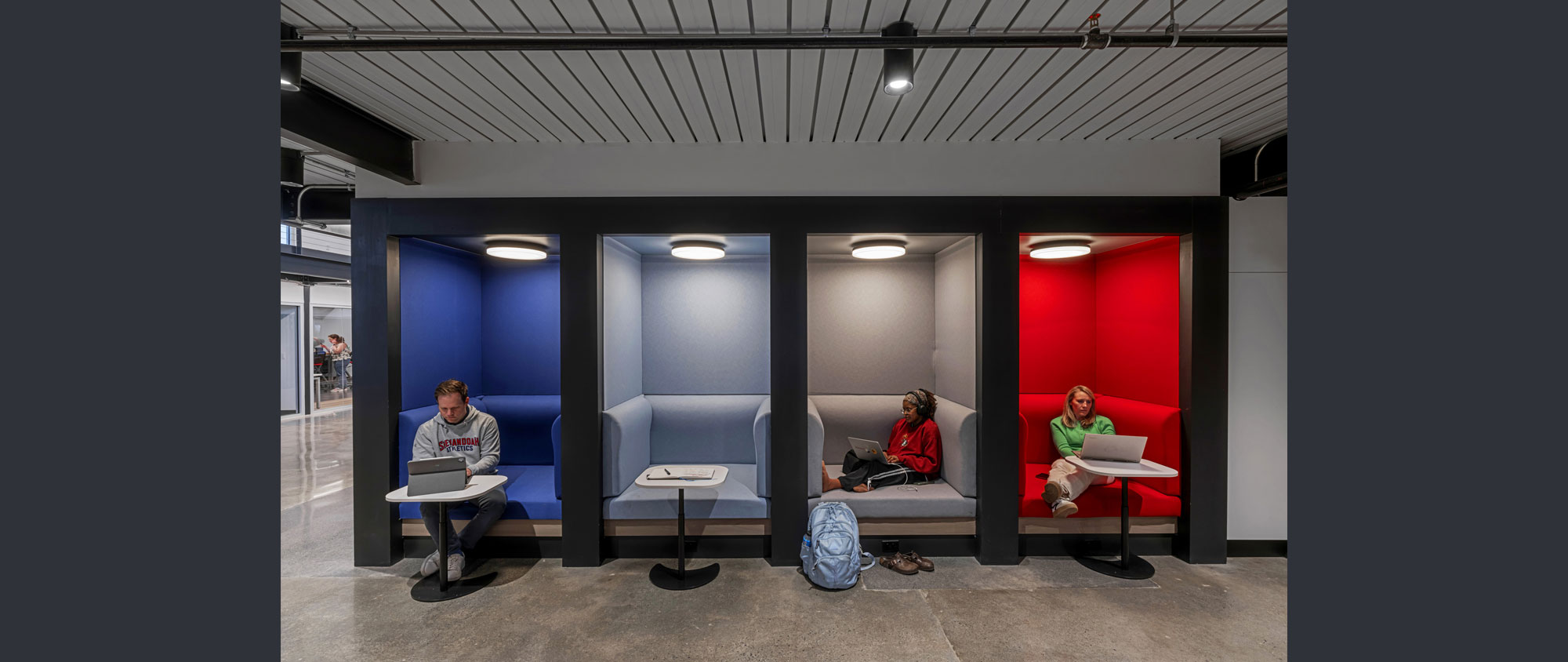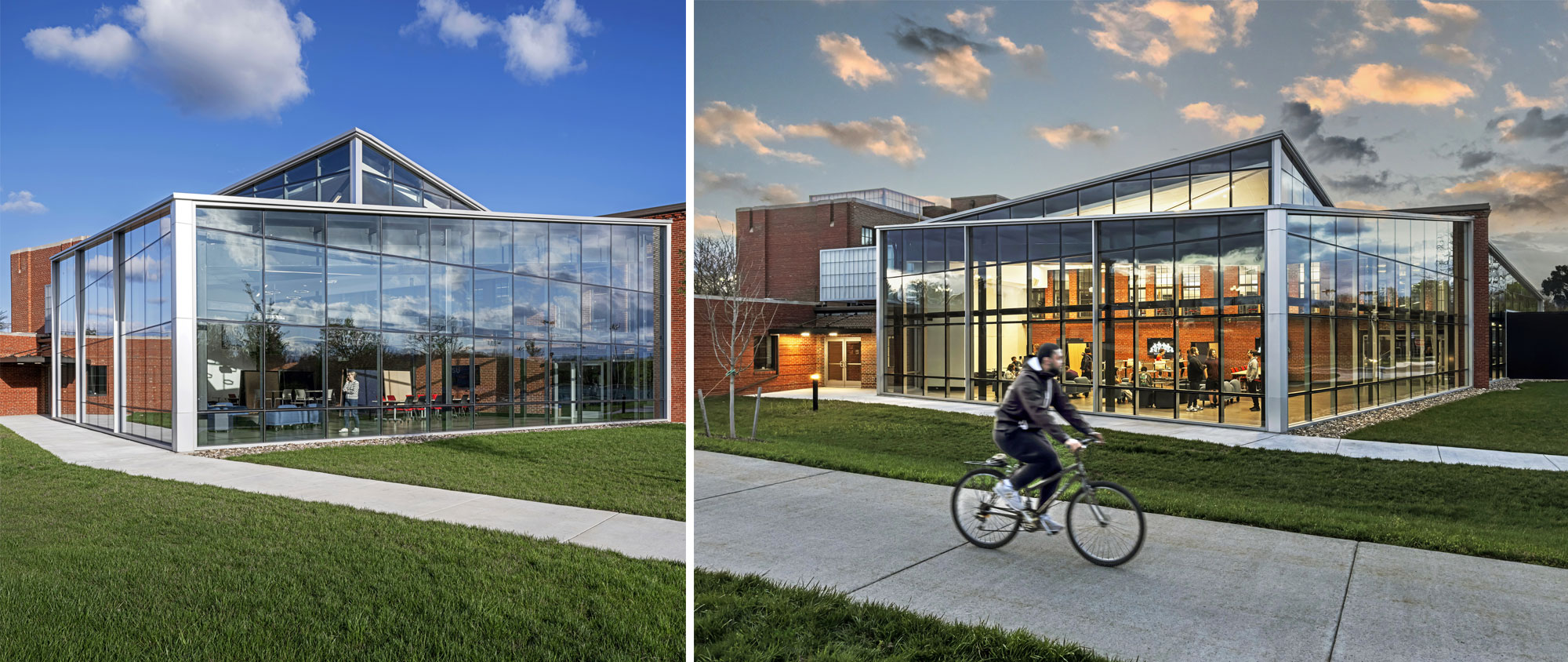The Hub for Innovators, Veterans and Entrepreneurs (HIVE) is a dynamic adaptive-reuse project, breathing new life into the historic military armory in Winchester, Virginia. Our design team successfully revitalized the existing structure, which included a two-story armory and a training gymnasium. Originally built in 1940, the building had served as a training ground for the National Guard from World War II until the early 1990s, while also hosting community events such as dances, wrestling matches, and performances—including a concert by Patsy Cline.
The renovation began with the stabilization of the 18,000-square-foot building, including the safe removal of hazardous materials and ensuring a water-tight envelope through roof replacement, brick and stone repair, and the installation of historically appropriate replacement windows. By preserving the building, the adaptive reuse project honored its past while creating new, student-centered community spaces.
The main gymnasium level now contains incubator and education spaces, such as an immersive learning technology lab, a motion capture lab, maker space, and a connection to the E-Sports arena. In order to maximize the building, the existing gymnasium space now includes a mezzanine level, connected by a monumental and learning stair, that creates additional space for the University’s academic and administrative needs. Concurrently, the two-story armory, located just in front of the gymnasium and contains the historic façade along Millwood Avenue, is being repurposed to serve the Winchester community. This armory building houses a new Veteran’s Center, honoring those who have served this country by providing a community facility with access to counseling, employment help, and other social services.
In addition to the renovation, a significant new addition, the “Collaboratory,” was constructed and directly connected to the gymnasium. This signature element, with its glass form, delicately contrasted the masonry-heavy historic structure. Its modest scale respected the existing context, while its shifting roof planes celebrated the regional topography of the Shenandoah Valley and the Appalachian Mountains. The Collaboratory became the home of the Shenandoah Center for Immersive Learning (SCiL), supporting cross-disciplinary academic initiatives and serving as an intimate event space for up to 170 people.
The project aimed to provide Shenandoah University with an architectural landmark that honored Virginia’s Veterans and the Winchester community—past and present—while offering dedicated academic space for students. Through meticulous restoration and the sophisticated design of the modern Collaboratory, the HIVE now stands as a testament to Shenandoah’s enduring legacy, embodying its past, present, and future aspirations.
A Part of History
The Winchester Armory was built in 1940, and members of the Virginia Army National Guard 3rd Battalion, 116th Infantry Regiment set out from there for World War II’s allied June 6, 1944, D-Day Invasion. The armory remained the headquarters for the 3rd Battalion until 2009, when it moved to the Cherry-Beasley Readiness Center in Frederick County, Virginia. Over the years, the armory not only housed the guard unit but also the site of a host of community events, including dances and performances by musical acts, including Winchester-area native Patsy Cline in the early days of her career. Shenandoah acquired the site as the National Guard prepared for its move and has been working toward incorporating this important building into the university experience ever since.
Photos: ©Eric Laignel
